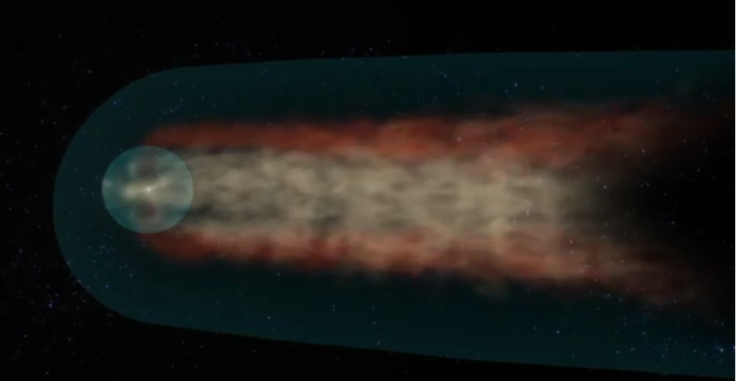
Three years after launching the Interstellar Boundry Explorer, or IBEX, which records imagery of the solar system, NASA is finally getting a clearer picture of what our universe looks like. And it has a tail. The heliotail is what propells the universe, much like a comet, consisting of "lobes" of faster and slower moving winds, the Los Angeles Times reported. Scientists announced the find Wednesday in the Astrophysical Journal along with a video explaining what the images captured.
"Scientists always presumed the heliosphere had a tail," IBEX mission scientist Eric Christian said during the conference. "But this is the first real data we have that gives us the shape of the tail. We've never taken a picture of it."
IBEX is able to map the solar system by detecting deep-space particles that collide with the heliosphere's hydrogen atoms and radiate back toward Earth. This allows it to graph where the edges of the solar system are, Gizmodo reported. Images show that there are two fast moving lobes at the top and bottom of the circle, and two slower moving lobes moving left to right. This resulted in an unexpected clover pattern. The shape also appears to be tilted, probably caused by magnetic fields shaping the heliotail.
Brenda Dingus of the Los Alamos National Laboratory said that these findings would help in studying other parts of the galaxy, like cosmic rays. The imagery could be used to assist in the projects being carried out by Voyager 1 and Voyager 2.
"These two missions are incredible complementary," he said. "IBEX is like an MRI -- you take an image of the whole body to see what's going on -- and the Voyagers are like biopsies."
© 2025 Latin Times. All rights reserved. Do not reproduce without permission.




